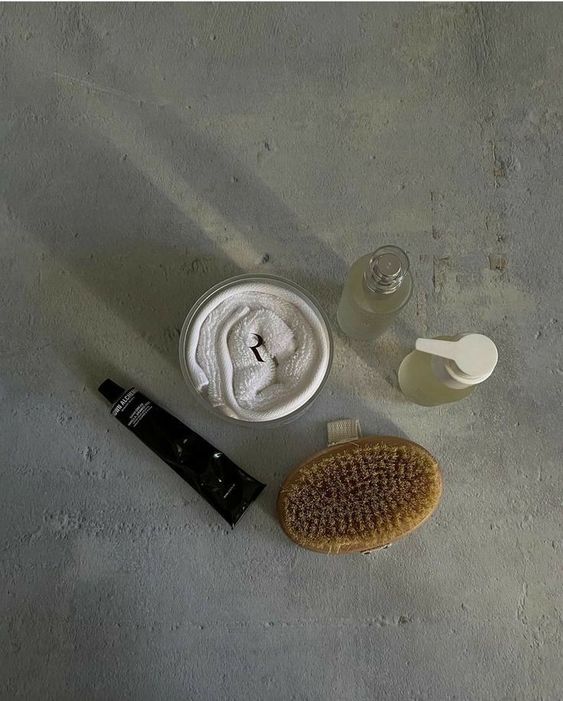
Probiotics this, prebiotics that…you seem to know how the sentence ends. Well, we know that this topic interests a lot of our readers so we decided to give you the nitty gritty details about it and ultimately provide you with the answers on how it can affect your skin’s health. Ready for the adventure?
The Clear and Concise Definition of Probiotics
[1]Probiotics are live germs (bacteria or yeast) that are capable of generating a wide array of health benefits when ingested or topically applied. Improved digestion, vitamin production, protection against disease, metabolism of medications and prevention/reduction of pathogenic bacteria overgrowth are some of those benefits. Probiotics naturally occur in our bodies in areas like the skin, vagina, gut, lungs, mouth, and urinary tract. Many of you know that fermented foods such as yogurt, kefir, and sauerkraut are rich in probiotics. They can also be administered via a supplement and some skincare brands have started incorporating this technology into their formulas. The most common strains used in all these industries are Lactobacillus, Bifidobacterium and Saccharomyces boulardii. Skin-wise, the purpose of probiotics is to support the “good bacteria” that live in a specific environment (microbiota)[2].
So far, the following benefits have been shown to be derived from the presence ofprobiotics in skincare
products[3][4]:
- Improved barrier function and moisturization
- Balanced pH (securing an acidic environment)
- Diminished free radical (ROS) formation
- Stimulation of collagen synthesis
- Promotion of healthy wound healing
- Reduction of transepidermal water loss
- Increased oxygen uptake and ATP production
- Decrease in oxidation of skin lipids
- Suitable for all skin types
- Enhanced antimicrobial action that helps to outcompete the “bad germs”
- Protection against UV-induced damage and other environmental aggressors
- Improved immunity and repair without causing harm or injury to the body
- Production of therapeutic substances like ceramides, citrulline, glutathione, lactic acid, hyaluronic acid, sphingolipids, filaggrin (natural moisturizing factor precursor), etc.
- They act as an adjuvant agent in the treatment of acne, eczema, dry skin, allergies and other inflammatory conditions
- Topical probiotics can be added to serums, moisturizers, exfoliants/peels, and post-operative treatments to enhance and speed up the recovery process
Can Scientists Add Live Cultures To Skincare?
The answer is yes, but it is not as simple as it sounds. The process is easy when it is carried out in a controlled environment (like a lab, a hospital, etc.). The problem is that the patient will not be able to replicate it at home on a daily basis. We all know how important regularity is when it comes to skin treatments. For this reason, some companies have attempted to add the probiotic strains to their formulas.
So far, very few brands, a handful at the most, have been able to achieve this and their claims are questionable. The following doubts are still up in the air:
a) What type of technology is used to ensure that the strains remain alive and actually attach to the skin?
b) Does the product contain a preservative?
- If the answer is yes, will the probiotics be killed off?
- If the answer is no, how do you prevent the product from decomposing?
c) Are skin colonizing bacteria present in the formula?
d) How many units and strains have been added?
Even though Staphylococcus epidermidis is the main bacterial colonizer of the skin flora (microbiota), the distribution of the strains can vary from area to another.[6] If the predominant strain of a specific zone is not present in the formula, then little to no benefit will be obtained from it. Furthermore, there are other factors that can disrupt the local strains and affect the effectivity of
skincare with probiotics
such as: age, sex, pollution, weather conditions, type of clothing worn, drugs (antiobiotics, diuretics, etc.), diet, stress, cleansing habits and underlying health conditions[6]. It then makes sense to explore different approaches to support and strengthen the “good bugs”.
One of those approaches is the addition of prebiotics, which are non-digestible carbs (fibers) that are broken down by bacteria and transformed into fuel[7]. In a nutshell, prebiotics are the food the friendly flora needs to thrive on and enhance overall health. Foods like artichokes, flaxseeds, onions, garlic, leeks, okra and jicama are considered the best sources.
Inprebiotics skincare
formulas, though, you will usually find other actives; namely, inulin, glucomannan, fructooligosaccharides and extracts derived from apples, bananas, chicory, dandelion and oats. Supporting the good bacteria, while keeping the bad ones, and helping to calm inflammatory conditions are a few of theprebiotics benefits
for the skin.
If prebiotics are not “your thing”, you can try using formulas that contain postbiotics. These are the byproducts (metabolites) that result after prebiotics are fermented by live microorganisms such as amino acids, enzymes, vitamins (B & K), antimicrobial peptides (defensins), acids (lactic acid), polysaccharides, and short-chain fatty acids (butyric acid)[8].
Just like prebiotics,postbiotics benefits
focus on the support and reinforcement of the friendly germs.Postbiotics in skincare
can also act as antioxidants, brightening, exfoliating, moisturizing, protective, regenerative and soothing agents.
The bacterial and yeast filtrates/ lysates (their cells are broken down) used in skincare are actually postbiotics, not probiotics. So, don´t be fooled into believing that those formulas contain live bugs. Some companies make bogus marketing claims about their “probiotic range” and lead their customers to believe them. While you will definitely get a benefit, they are not telling the whole truth. If a brand states that they did include real probiotics in their formulas, ask them to prove this as well as the viability of those cultures once they are applied on the skin surface.
What about adding yogurt or probiotic capsules to a facial mask in order to enrich it with live microorganisms? Well, their action will be similar to that of postbiotics as the strains provided are not the same as those that live on the skin. In fact, they are more suitable for the gut. Do not panic, though, as there are no unwanted side effects involved. Plus, having some me-time to treat your skin to a facial is the perfect way to unwind yourself and combat stress (which we know has terrible outcomes on the microbiome).
The Gut-Skin Axis: The Full Scope
Several studies have been able to establish a connection between the colon and skin health; this relationship is known as the gut-skin axis. Among the many theories that have been put forward, the one that appears more convincing suggests that this complex interaction is dependent upon dietary, endocrine, environmental, immune, medical and nervous factors[9]. The intestinal flora releases neurotransmitters (noradrenaline, serotonin, etc.-, and short fatty acids (butyric, lactic, etc.) in response to environmental stimulants[9]. A predominantly Western-style diet, high in glycemic load and saturated fats, and food intolerances can increase the concentration of obnoxious microorganisms in the gut[9]. All these substances travel across the intestinal lining, into the bloodstream, and reach the skin to produce a local effect[9]. In addition, any shift in the composition of the skin flora can negatively impact the levels of anti-inflammatory & pro-inflammatory compounds produced by the immune system and be perceived on the skin as acne, atopic dermatitis rosacea, psoriasis, etc[9]. As you can imagine, these ailments will be even more severe in those patients that suffer from an impaired intestinal barrier[9]. It makes sense, then, to eat a balanced diet, repair the leaky gut, reduce stress levels and provide
probiotics for skin and gut prebiotics and probiotics.
Tips & Tricks For Maintaining Your Skin Microbiome
- Cleanse with a mildly acidic formula (pH 4.5-5.5) as these will remove impurities without stripping the skin of its precious lipids and antimicrobial peptides
- Avoid over cleansing and exfoliating
- Stave off sodium lauryl sulfate and sodium laureth sulfate (surfactants)
- Steer clear of exfoliators made with harsh beads, shells or granules
- Refrain yourself from using antibacterial wipes and soaps
- Topical antibiotics should only be applied when prescribed by a dermatologist (and for short periods)
- Take warm (not hot) baths or showers
- Discard all your loofahs and brushes and replace them with a soft wash cloth
- Regardless of your skin type, moisturize diligently
- Apply formulas that contain high concentrations of prebiotics and postbiotics
-
Eat prebiotic-rich foods or take
prebiotics supplements
on a daily basis
- Take a probiotic with enteric coating that contains around 10 strains and 20-100 billion CFU (depending on your needs)
- Apply skincare formulas that contain postbiotics, prebiotics and probiotics
- Minimize your intake of refined sugar/grains, dairy products, refined/hydrogenated oils
- Maximize your consumption of fiber-rich foods like fresh fruits and vegetables, nuts and seeds, legumes, whole grains (preferably gluten free).
- Include coconut-derived products, fermented foods and non-hot spices in your diet
- Practise yoga, deep breathing, meditation, earthing or any other relaxation technique
- Detox once or twice per year to compensate for the exposure to pollution and other sources of toxic chemicals
Now that you have gotten the full scope on probiotics and their effect on your skin, make sure to implement our tips and tricks into your daily skin routine for a healthy and radiant complexion. Make sure to tune into our Instagram, Facebook, Pinterest, and Linkedin for more information on how to take better care of your skin!
References:
[1] https://my.clevelandclinic.org/health/articles/14598-probiotics
[2] https://www.fiosgenomics.com/microbiome-vs-microbiota/
[3] https://www.youtube.com/watch?v=1axL_NRzt_w
[4] https://www.researchgate.net/publication/259454516_Health_Effects_of_Probiotics_on_the_Skin
[5] https://qima-lifesciences.com/en/microbiota-vs-microbiome/
[6] https://www.ncbi.nlm.nih.gov/pmc/articles/PMC3535073/
[7] https://www.ncbi.nlm.nih.gov/pmc/articles/PMC6463098/
[8] https://www.health.harvard.edu/nutrition/what-are-postbiotics




